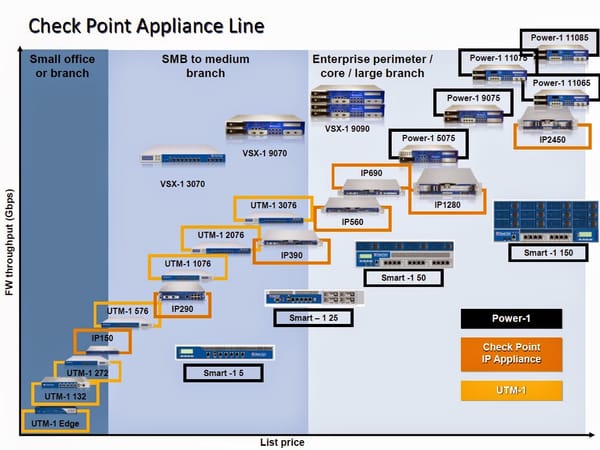Yale New Haven Health Settles for $18 Million Following Massive 5.6 Million Patient Data Breach

Connecticut's largest healthcare system reaches preliminary settlement in class action lawsuit after sophisticated March 2025 cyberattack
Executive Summary
In one of the most significant healthcare data breach settlements of 2025, Yale New Haven Health System (YNHHS) has agreed to pay $18 million to resolve class action litigation stemming from a cyberattack that compromised the personal information of nearly 5.6 million patients. The breach, which occurred on March 8, 2025, ranks as the largest healthcare data breach reported to federal regulators so far this year and serves as another stark reminder of the healthcare sector's continued vulnerability to sophisticated cyber threats.
A federal court granted preliminary approval of the settlement on Tuesday, October 22, 2025, with a final approval hearing scheduled for March 3, 2026. The settlement represents not just monetary compensation but also mandates "meaningful data security measures" to protect patient information from future incidents.
The Breach: Timeline and Impact
Detection and Initial Response
Over the weekend of March 8, 2025, Yale New Haven Health identified unusual activity affecting IT services across its entire health system. The organization's Digital and Technology Solutions team immediately recognized the severity of the situation and moved swiftly to contain the threat. Within days of detection, YNHHS engaged Mandiant, an internationally renowned cybersecurity firm and subsidiary of Google Cloud, to assist with both system restoration and forensic investigation.
The health system publicly announced the cybersecurity incident on March 11, 2025—just three days after detection—demonstrating an unusually transparent approach compared to many healthcare breaches where notification can take weeks or months. Federal authorities were notified immediately as required under HIPAA breach notification rules.
Scope of Compromised Data
By April 11, 2025, YNHHS reported to the U.S. Department of Health and Human Services that the breach affected 5,556,702 individuals—making it the single largest healthcare data breach of 2025 and one of the most significant in recent years. For context, this number exceeds the entire population of Connecticut by more than 2 million people, as YNHHS serves patients across Connecticut, New York, and Rhode Island.
The stolen information varied by individual but potentially included:
- Demographic information: Names, dates of birth, addresses, telephone numbers, email addresses
- Identity data: Social Security numbers, patient type, medical record numbers
- Protected attributes: Race or ethnicity information
Importantly, the attackers did not access:
- Electronic medical records or treatment information from Epic EMR system
- Financial account or payment information
- Employee HR data
YNHHS confirmed that an unauthorized third party gained access to their network and obtained copies of certain data files on March 8, 2025. The sophistication of the attack led investigators to believe it was executed by individuals or groups with a pattern of such incidents, though no ransomware group has publicly claimed responsibility and no stolen data has appeared on dark web leak sites.
Organizational Impact
Yale New Haven Health System is Connecticut's largest healthcare organization, with:
- Five acute-care hospitals (Bridgeport, Greenwich, Lawrence + Memorial, Westerly, and Yale New Haven Hospital)
- More than 360 outpatient locations across three states
- Over 30,000 employees
- More than 1,500 in-patient beds
- Annual net patient revenue exceeding $5.6 billion
- Affiliation with Yale University and Yale School of Medicine
Despite the breach's massive scale, YNHHS maintained that patient care was not significantly disrupted. The patient portal and electronic medical records continued operating normally, though the organization experienced intermittent phone and internet connectivity issues as security teams purposefully rebuilt access to programs as part of their comprehensive cybersecurity protocols.
The Legal Response: From Breach to Settlement
Class Action Litigation
In the weeks following the breach disclosure, multiple lawsuits were filed against Yale New Haven Health. By June 2025, plaintiffs filed a consolidated class action complaint with 15 named plaintiffs and four parents or guardians representing eight unnamed minors, on behalf of the entire affected class.
The consolidated complaint accused YNHHS of:
- Negligence in failing to employ industry-standard data security measures
- Breach of implied contract with patients who entrusted the system with sensitive information
- Unjust enrichment
- Breach of fiduciary duty
- Failure to adequately protect sensitive patient data
Lead plaintiff Jon Nathanson's complaint emphasized that he and other patients had entrusted Yale New Haven Health with sensitive, private information that the system retains for many years. The lawsuit argued that YNHHS failed to employ industry standards for data security, opening plaintiffs to identity theft and other criminal activity while breaking their pledge to patients to guard private information.
After the breach, affected patients were forced to spend valuable time scrutinizing credit reports and financial account statements for signs of attempted identity theft or fraud—time they would have otherwise spent on other activities.
Settlement Terms and Distribution
On September 11, 2025, Yale New Haven Health offered to create an $18 million global fund to settle all claims. The preliminary settlement agreement includes:
Monetary Compensation:
- Total settlement fund: $18 million
- Attorney's fees: $6 million (one-third of settlement fund)
- Service awards: $2,500 each for class representatives
- Alternative cash payment to victims: Up to $100 per person (pro rata basis)
- Claims for out-of-pocket losses: Available to all class members
Non-Monetary Requirements: YNHHS agreed to separately fund and implement "meaningful data security measures" to better protect individuals' private information from future data security incidents. While specific details of these measures have not been publicly disclosed, they represent commitments beyond the monetary settlement.
The Settlement Reality: A Critical Perspective
Regulatory attorney Paul Hales of the Hales Law Group (not involved in the case) offered a sobering assessment: "Class action plaintiffs can count on speedy settlements because prestigious defendants like Yale New Haven Health hurry to stanch reputational bleeding. Defendants also seek to limit their monetary loss. Here, YNHHS' loss is limited to $18 million, of which plaintiffs' counsel receives one-third."
Hales noted that "the prospect of a $100 alternative payout to victims is illusory because it is 'pro rata.'" This means if all 5.6 million affected individuals filed claims, each would receive approximately $2.14 from the remaining $12 million fund after attorney fees—far less than the advertised $100 maximum.
The settlement follows a pattern seen in other major healthcare breaches where organizations prioritize rapid resolution to limit reputational damage and financial exposure, often resulting in minimal compensation for individual victims while providing substantial payments to legal counsel.
Healthcare Sector Under Siege
The Broader Context
The Yale New Haven Health breach occurred during what security experts are calling an unprecedented crisis in healthcare cybersecurity. The sector has become the prime target for cybercriminals due to several factors:
- High-value data: Medical records contain comprehensive personal information valuable for identity theft and fraud
- Operational criticality: Healthcare organizations often pay ransoms to avoid disruption to patient care
- Legacy systems: Many healthcare providers operate outdated IT infrastructure with known vulnerabilities
- Complex environments: Multiple data systems, third-party vendors, and regulatory requirements create security challenges
According to IBM's 2025 Cost of a Data Breach Report, healthcare breaches remained the costliest for the 15th consecutive year, averaging $7.42 million, despite a significant $2.35 million reduction from 2024. Healthcare data breaches took the longest to identify and contain at 279 days—five weeks longer than the global average.
2025: A Record Year for Healthcare Breaches
The Yale New Haven Health incident represents just one data point in an alarming trend:
- UnitedHealth Group's Change Healthcare: A February 2025 ransomware attack potentially affected approximately 190 million individuals, causing catastrophic disruption across the U.S. healthcare system and inflicting severe financial strain on providers nationwide.
- Blue Shield of California: Reported a breach to the U.S. Department of Health and Human Services impacting 4.7 million individuals, part of a larger series of healthcare data compromises.
- Covenant Health: In May 2025, a ransomware attack orchestrated by the Qilin cybercriminal group compromised sensitive information of 7,864 individuals and forced the healthcare system to shut down critical IT infrastructure.
- Frederick Health: A ransomware attack in January at Frederick Health Medical Group, a major healthcare provider in Maryland, led to a data breach affecting nearly one million patients.
In 2024, the U.S. Department of Health and Human Services reported over 700 healthcare data breaches, compromising more than 180 million records. The trend has accelerated in 2025, with experts warning that healthcare organizations remain unprepared for the sophistication and frequency of modern cyberattacks.
The Mandiant Investigation: What We Know
Yale New Haven Health's decision to engage Mandiant—one of the world's premier cybersecurity incident response firms—signals the seriousness with which they approached the breach. Mandiant, acquired by Google Cloud in 2022, specializes in investigating nation-state attacks, advanced persistent threats, and sophisticated ransomware operations.
The firm's involvement suggests several possibilities about the nature of the attack:
Data Exfiltration Focus: The absence of reported file encryption and the confirmation that patient portal and EMR systems remained operational throughout the incident suggests this was a data theft operation rather than a traditional ransomware attack designed to lock systems.
Sophisticated Threat Actor: According to YNHHS spokesperson Dana Marnane, "The sophistication of the attack leads us to believe that it was executed by an individual or group who has a pattern of these types of incidents." This characterization, combined with Mandiant's involvement, points to an experienced threat actor or group.
No Public Attribution: Unusually, no ransomware group has claimed responsibility for the attack as of October 2025, and no stolen data has surfaced on dark web leak sites. This could indicate:
- A state-sponsored or advanced persistent threat actor focused on intelligence gathering
- A ransomware group whose negotiation with YNHHS did not break down
- An operation designed to remain covert for strategic reasons
The lack of public attribution is notable in an era where most ransomware groups actively publicize their victims to pressure payment. The silence suggests either successful private negotiation or a different type of adversary entirely.
HIPAA Compliance and Regulatory Implications
Breach Notification Requirements
Under the HIPAA Breach Notification Rule, covered entities must notify affected individuals, the Secretary of Health and Human Services, and in some cases the media, following the discovery of a breach of unsecured protected health information.
Yale New Haven Health's response timeline:
- March 8, 2025: Breach occurred and was detected
- March 11, 2025: Public announcement (3 days)
- April 11, 2025: Official breach report to HHS (34 days)
- April 14, 2025: Individual notification letters began (37 days)
The organization complied with the 60-day notification requirement under federal HIPAA rules. However, this incident occurred in Connecticut, which has stricter requirements than HIPAA in certain areas, potentially subjecting YNHHS to additional state-level scrutiny.
Potential Regulatory Penalties
Beyond the class action settlement, Yale New Haven Health faces potential regulatory enforcement actions from:
Department of Health and Human Services Office for Civil Rights (OCR):
- HIPAA violations can result in penalties ranging from $100 to $50,000 per violation (or per record)
- Maximum annual penalty per violation category: $1.5 million
- OCR has announced plans to conduct "proactive audits" and investigations to identify compliance issues before they result in breaches
State Regulators:
- Connecticut and other affected states may pursue separate enforcement actions
- State-specific healthcare data protection laws often impose additional requirements beyond HIPAA
Given the scale of this breach, federal regulators are likely investigating whether YNHHS had adequate administrative, physical, and technical safeguards in place as required by the HIPAA Security Rule.
The Repeat Offender Factor
This is not Yale New Haven Health's first significant data breach. In 2023, a breach involving vendor Welltok's MOVEit Transfer tool affected 847,356 Connecticut residents. While that incident did not compromise Social Security numbers or financial data, it demonstrated ongoing challenges in securing third-party vendor relationships—a persistent vulnerability across the healthcare sector.
Additionally, YNHHS cited a data breach impacting 109,728 patients and hospital employees as one element in its decision to pull out of a deal to buy Prospect Medical Holdings' three Connecticut hospitals in 2024. This history of security incidents may factor into regulatory assessments of the organization's overall security posture and commitment to protecting patient data.
Financial Impact and Cost Analysis
The $18 million settlement, while significant, represents just a fraction of the total financial impact of this breach on Yale New Haven Health:
Direct Costs
- Settlement payment: $18 million
- Forensic investigation: Mandiant engagement (estimated $500,000 - $2 million+)
- Legal defense: Substantial attorney fees for defense counsel
- Credit monitoring services: 24-month credit monitoring and identity theft protection for affected individuals whose SSNs were compromised
- Notification costs: Mailing 5.6 million notification letters with call center support
Indirect Costs
- Operational disruption: IT systems rebuild and security enhancements
- Reputational damage: Potential patient loss and difficulty attracting new patients
- Regulatory investigations: Ongoing OCR investigation costs
- Cyber insurance premium increases: Future insurance costs will likely rise substantially
- Security improvements: Investment in enhanced cybersecurity infrastructure
Healthcare breach cost studies suggest that with an average healthcare breach costing $7.42 million and costs scaling with record count, YNHHS likely faces total breach-related costs well exceeding $50-75 million when all direct and indirect expenses are tallied.
For an organization with $5.6 billion in annual revenue, these costs are manageable but not insignificant. More importantly, the incident underscores that even well-resourced healthcare systems with strong affiliations (Yale University, Yale School of Medicine) remain vulnerable to sophisticated cyber threats.
Security Lessons and Recommendations
The Yale New Haven Health breach offers critical lessons for healthcare organizations of all sizes:
What Went Right
Rapid Detection: YNHHS detected the breach on the same day it occurred (March 8), demonstrating effective monitoring capabilities.
Immediate Containment: The Digital and Technology Solutions team acted quickly to contain the incident, preventing further spread.
Expert Engagement: Bringing in Mandiant immediately ensured professional incident response.
Transparent Communication: Public announcement within three days and federal notification set a positive example.
Operational Continuity: Maintaining patient care and EMR functionality throughout the incident demonstrated effective business continuity planning.
What Needs Improvement
Prevention Failure: Despite resources and expertise, attackers successfully penetrated the network and exfiltrated 5.6 million records.
Data Segmentation: The ability to copy such a massive volume of patient data suggests inadequate network segmentation and data access controls.
Third-Party Risks: Given the previous MOVEit breach, YNHHS may need stronger vendor security requirements and monitoring.
Recommendations for Healthcare Organizations
Based on this incident and broader healthcare cybersecurity trends, healthcare organizations should:
- Implement Zero Trust Architecture
- Verify every access request regardless of source
- Segment networks to limit lateral movement
- Apply least-privilege access principles
- Deploy Advanced Threat Detection
- Invest in AI-powered security analytics
- Implement 24/7 security operations center monitoring
- Use behavioral analytics to detect anomalous data access
- Strengthen Data Protection
- Encrypt data at rest and in transit
- Implement data loss prevention (DLP) tools
- Monitor and restrict bulk data transfers
- Enhance Vendor Risk Management
- Conduct thorough security assessments of all vendors
- Require contractual security commitments
- Monitor third-party access continuously
- Conduct Regular Security Assessments
- Perform annual penetration testing
- Conduct quarterly vulnerability assessments
- Test incident response plans regularly
- Invest in Security Awareness Training
- Train all staff on phishing recognition
- Educate employees about social engineering tactics
- Foster a security-conscious culture
- Prepare for Incidents
- Maintain updated incident response plans
- Establish relationships with forensic firms before incidents occur
- Practice breach scenarios through tabletop exercises
The Bigger Picture: Healthcare Cybersecurity Policy
The Yale New Haven Health breach and similar incidents in 2025 have accelerated calls for stronger federal cybersecurity requirements for healthcare organizations.
Pending Legislation
Several bipartisan bills have been introduced in Congress:
Health Infrastructure Security and Accountability Act (HISAA): Would direct HHS to craft minimum cybersecurity standards for healthcare providers, health plans, clearinghouses, and business associates, with mandatory annual audits and stress tests.
Health Care Cybersecurity and Resiliency Act: Aims to modernize HIPAA to address current cybersecurity threats.
Healthcare Cybersecurity Improvement Act: Would require hospitals to establish basic cybersecurity standards as a Medicare Condition of Participation, effectively tying federal reimbursements to cybersecurity compliance.
HHS Initiatives
The Department of Health and Human Services has introduced Healthcare and Public Health Sector Cybersecurity Performance Goals (HPH CPGs), providing direct guidelines for essential security practices. HHS is also working with Congress to:
- Establish upfront investment programs to help low-resourced hospitals cover security costs
- Create incentive programs encouraging all hospitals to implement advanced protocols
- Increase civil monetary penalties for HIPAA violations
The shift toward proactive audits and investigations marks a departure from the previous complaint-driven enforcement model, signaling that healthcare organizations can expect increased regulatory scrutiny regardless of whether breaches occur.
Looking Forward
The Yale New Haven Health settlement, while providing some measure of compensation to affected patients, highlights fundamental challenges in addressing the healthcare cybersecurity crisis:
Inadequate Deterrence: An $18 million settlement for compromising 5.6 million patient records—approximately $3.21 per affected individual—hardly serves as a meaningful deterrent to poor security practices or adequate compensation to victims.
Rapid Resolution Priority: Organizations prioritize quick settlements to limit reputational damage, often at the expense of meaningful accountability or victim compensation.
Continuing Vulnerability: Despite settlements and pledges to improve security, healthcare organizations continue to suffer breaches at alarming rates.
Regulatory Gaps: Current HIPAA requirements, written for a different technological era, struggle to address modern sophisticated cyber threats.
The final approval hearing on March 3, 2026, will determine whether this settlement receives court approval. In the meantime, affected patients should:
- Enroll in credit monitoring services offered by YNHHS
- Monitor financial accounts regularly for suspicious activity
- Place fraud alerts with credit bureaus
- Consider credit freezes for maximum protection
- File claims to receive pro rata share of settlement fund
- Report identity theft to the FTC if it occurs
For the broader healthcare sector, the Yale New Haven Health incident serves as yet another wake-up call that current security measures, regulatory frameworks, and industry practices remain insufficient to protect patient data from determined adversaries.
Conclusion
The Yale New Haven Health $18 million settlement represents one of the largest healthcare data breach resolutions in 2025, yet it also exemplifies the challenges inherent in our current approach to healthcare cybersecurity and patient data protection.
With preliminary approval granted and a final hearing set for March 2026, this case will likely influence how healthcare organizations approach both cybersecurity investment and breach response going forward. However, without more fundamental changes—stronger federal requirements, meaningful penalties, adequate funding for security improvements, and industry-wide cultural shifts—healthcare will likely remain the most targeted and vulnerable sector for years to come.
For the 5.6 million patients whose data was compromised, the settlement offers limited financial compensation but serves as a stark reminder of the ongoing risks to personal information in our increasingly digital healthcare system. The true test of this settlement's value will be whether Yale New Haven Health's mandated security improvements prove more effective than the financial penalty in preventing future breaches.
Related Articles
- Global Data Breach Cost Trends 2025: A Tale of Two Trajectories
- UnitedHealth Group's Massive Data Breach: A Cybersecurity Crisis Unfolds
- Covenant Health Cyberattack: A Comprehensive Analysis of the 2025 Data Breach
- The 15 Most Devastating Data Breaches in History
- 10 Latest Global Cybersecurity Breaches, Hacks, Ransomware Attacks and Privacy Fines (2025)
Compliance Resources
- HIPAA and HITECH: A Deep Dive into Protecting Health Information in the Digital Age
- Mastering HIPAA Security Rule Compliance: Protecting Your Digital Healthcare Landscape
- Healthcare Cybersecurity in 2025: New Regulations Transforming the Industry
- Navigating the Patchwork: A Comparison of State-Specific Healthcare Data Protection Laws
- The Gold Standard for Healthcare Data Protection in 2025 (HITRUST CSF)
For questions about this breach or to discuss your organization's cybersecurity needs, contact the team at CISO Marketplace.
About the Author: This article was researched and written by the security intelligence team at Breached Company, your source for breaking news and in-depth analysis of data breaches, cybersecurity incidents, and privacy violations worldwide.
Last Updated: October 26, 2025





